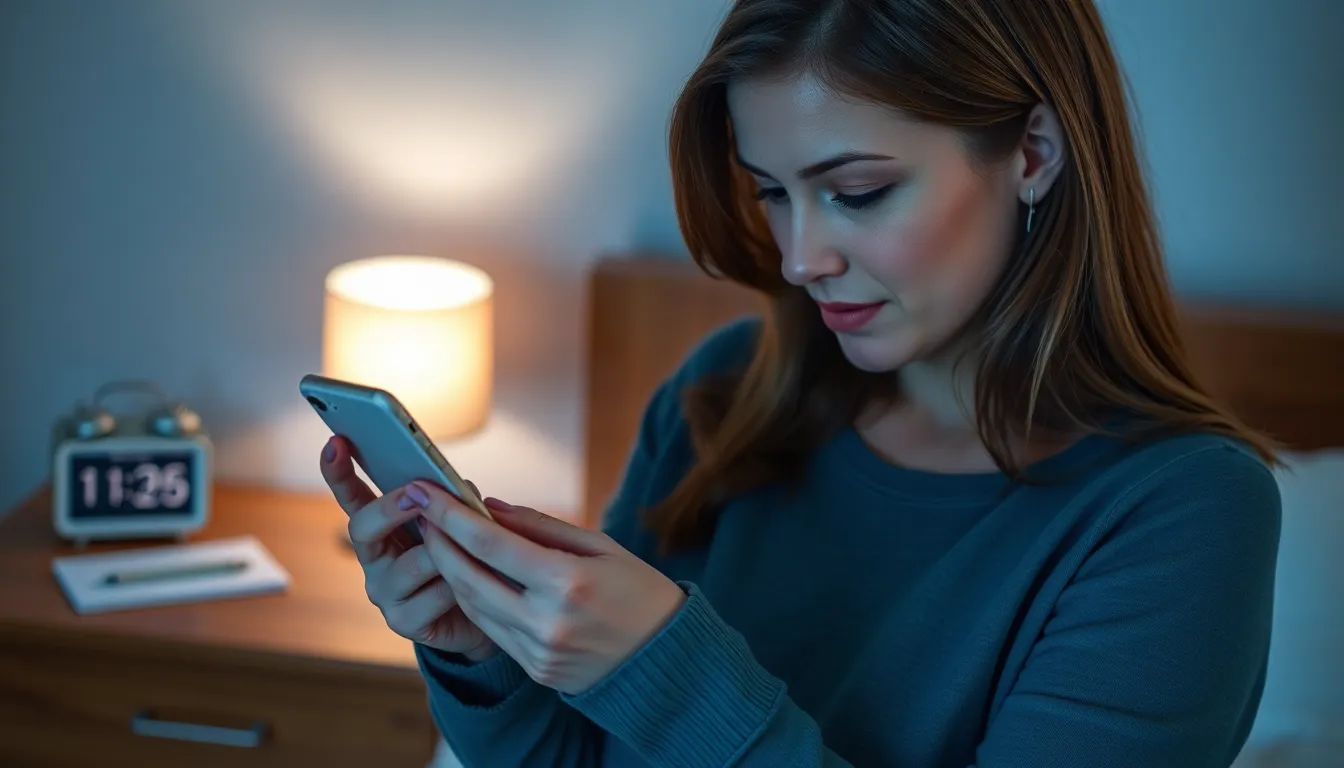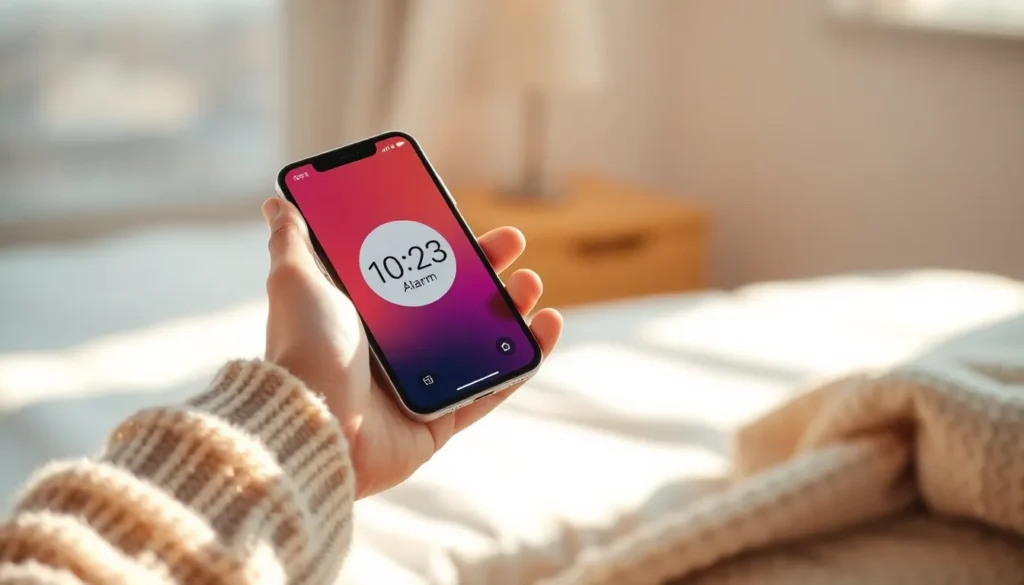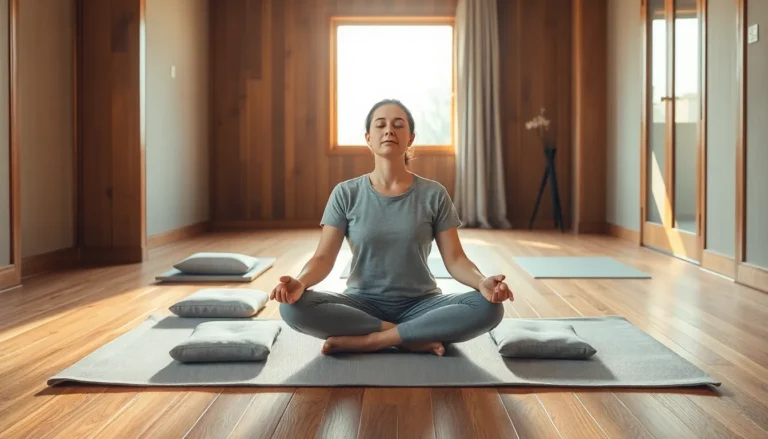Table of Contents
ToggleWaking up in the morning can feel like a battle between the cozy embrace of your blanket and the relentless beeping of your iPhone. If hitting the snooze button has become your morning ritual, you’re not alone. But what if there’s a way to customize that snooze time to fit your unique snoozing style? Imagine a world where you can snooze for just the right amount of time—no more oversleeping or waking up in a panic!
Changing the snooze duration on your iPhone might seem like a small tweak, but it can transform your mornings from chaotic to calm. With a few simple steps, you can reclaim control over those precious extra minutes of sleep. So grab your iPhone and get ready to revolutionize your morning routine—because who wouldn’t want to wake up feeling like a well-rested champion?
Understanding The Snooze Feature
Understanding the snooze feature can greatly enhance the morning experience. It allows users to postpone their alarms for a few extra minutes of sleep, providing a brief reprieve from waking up.
What Is The Snooze Function?
The snooze function on the iPhone offers users the ability to delay alarm notifications temporarily, typically by 9 minutes. When activated, it gives individuals a few moments before sounding the alarm again. This repeated process can happen multiple times, depending on the user’s preferences. Many appreciate this feature as it offers a sense of control over waking, helping to ease the transition from sleep to alertness.
Importance Of Customizing Snooze Settings
Customizing snooze settings significantly impacts morning routines. By adjusting the snooze duration, users can align it with their unique wake-up needs. While the standard snooze time is 9 minutes, individuals may find that a longer or shorter interval works better for their routines. This adjustment can lead to better sleep quality and improved morning productivity. Tailoring these settings fosters better sleep habits and enhances overall well-being.
Steps To Change Snooze On iPhone

Adjusting the snooze settings on an iPhone enhances the overall wake-up experience. Here are the key steps involved.
Accessing The Clock App
To access the Clock app, locate the icon on the home screen. Tapping the icon opens the app, revealing various timer and alarm options. Users can find alarms listed at the bottom of the screen. Exploring this area allows for easy navigation through existing alarms. A simple tap on the “Alarm” section provides access to modify or create new alarms.
Modifying Alarms And Snooze Options
Alarms can be modified easily once inside the Alarm section. Tapping “Edit” in the upper left allows access to individual alarms. Each alarm displays options to change the time and other settings. Selecting an alarm provides further customization features, including optimally adjusting the snooze option. Users can’t directly change the default snooze duration, but setting multiple alarms at preferred intervals offers control over wake-up times.
Tips For Effective Snoozing
Customizing the snooze feature on an iPhone can significantly impact morning productivity. Finding the right snooze duration enhances the waking experience.
Finding Your Ideal Snooze Duration
Experimenting with different snooze durations aids in determining what feels best. Users may find that a shorter snooze, like 5 minutes, minimizes sleep inertia. Alternatively, longer durations, up to 15 minutes, could accommodate those needing gradual waking. Tracking the effects of various intervals strengthens awareness of personal sleep habits. Monitoring how each duration affects alertness helps in further adjustments. Adjusting the setting based on personal responses creates a tailored morning routine. The perfect duration leads to a smoother transition from sleep to wakefulness.
Using Snooze Strategically
Using snooze strategically offers a helpful approach to waking up. Setting multiple alarms at staggered intervals ensures restful sleep instead of feeling rushed. For instance, an alarm can be set to ring every 10 minutes, allowing for brief moments of rest. Planning these alarms during lighter sleep cycles reduces grogginess. Aligning snooze usage with specific activities that follow wake-up time optimizes morning efficiency. Using the snooze function as a cue for morning tasks reinforces a productive routine. Identifying the best times to hit snooze empowers individuals to customize their waking experience.
Troubleshooting Common Issues
Users may encounter issues with the snooze feature on their iPhone. Troubleshooting can help resolve these problems quickly.
When Snooze Doesn’t Work
Snooze may fail to activate due to software glitches or outdated iOS versions. Restarting the iPhone often resolves minor issues, restoring the functionality of the snooze button. Checking for available software updates can improve performance; users should regularly update their device. Sometimes, disabling and re-enabling the alarm can reset the snooze feature. Persistent issues might require a full device reset, restoring factory settings to eliminate software conflicts.
Resetting Your Alarm Settings
Accessing the Clock app serves as the first step to reset alarm settings. Users can delete existing alarms by swiping left and tapping “Delete.” Setting new alarms allows customization for preferred wake-up intervals. Make sure to experiment with different configurations, as each alarm can offer its own snooze setup. For best results, consider using a combination of various intervals to ensure a smoother wake-up experience. Adjusting the settings appropriately can lead to hassle-free mornings.
Changing the snooze settings on an iPhone can greatly enhance the waking experience. By customizing alarm intervals and experimenting with different snooze durations, users can find what works best for their morning routines. This small adjustment can lead to improved sleep quality and a more productive start to the day.
With the tips provided, users can troubleshoot common issues and ensure their alarms function as intended. Embracing these changes not only aids in waking up but also fosters better sleep habits, ultimately contributing to overall well-being. Taking control of snooze settings is a simple yet effective way to transform mornings into a more pleasant and efficient experience.







